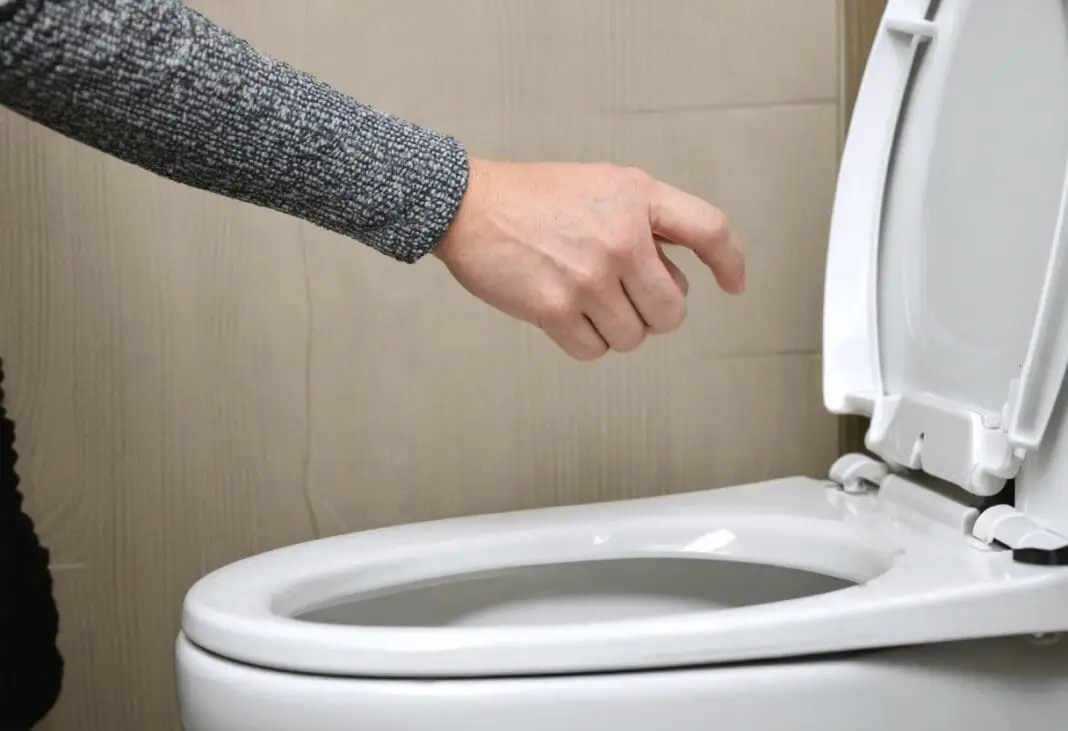Most people think they’re being hygienic in the bathroom, but there’s one habit that nearly everyone does wrong. Whether it’s leaving wet toothbrushes lying around or flushing with the toilet seat up, these seemingly innocent mistakes can turn your bathroom into a breeding ground for bacteria and germs. The worst part? You probably don’t even realize you’re doing it, and the consequences might be affecting your entire household’s health in ways you never imagined.
Keeping your toothbrush wet all day long
That toothbrush sitting in your bathroom cup might look innocent enough, but if it’s still damp from this morning’s brushing session, it’s basically a bacteria hotel. When toothbrush bristles don’t get the chance to dry out completely between uses, they create the perfect environment for harmful microorganisms to multiply. The moisture trapped in those bristles becomes a breeding ground for the exact germs you’re trying to remove from your mouth. Most people grab their toothbrush twice a day without ever checking if it’s properly dried, unknowingly brushing with a contaminated tool.
The solution isn’t as drastic as buying multiple toothbrushes for different times of day, though some dental experts recommend it. Simply touching the bristles before use can tell you if they’re ready for another round. If they feel damp, give them more time to air dry in an upright position. Storing your toothbrush in a closed container or travel case makes the problem worse by preventing air circulation. The key is finding a spot where your toothbrush can stand upright and get plenty of airflow, away from the humid shower area.
Flushing with the toilet seat up creates a germ tornado
Every time someone flushes without closing the toilet lid, they’re essentially creating a microscopic explosion that sends germs flying in all directions. This phenomenon, called toilet plume, can launch bacteria and other particles up to five feet away from the toilet and keep them floating in the air for up to 15 minutes. Those invisible droplets don’t just disappear – they land on every surface in your bathroom, including your towels, toothbrush, and anything else within range. The force of modern toilets makes this problem even worse, turning your bathroom into a contamination zone with each flush.
The simple act of closing the toilet lid before flushing dramatically reduces this spread of germs and makes your bathroom safer for everyone. Sure, the toilet seat itself will need more frequent cleaning, but that’s much easier than disinfecting every surface in your bathroom multiple times a week. This habit becomes even more important when someone in the house is sick, as viruses and bacteria from illness can spread much more easily through toilet plume. Making lid-closing a household rule protects everyone and reduces the overall cleaning workload.
Sharing personal hygiene items spreads more than germs
Families often share everything from meals to streaming accounts, but personal hygiene items should never be on that list. Toothbrushes, razors, and towels might seem harmless to share in a pinch, but they can transfer bacteria, viruses, and other microorganisms between family members. Even if everyone in the house seems healthy, people can carry different strains of bacteria that don’t affect them but might cause problems for others. This becomes especially problematic when someone has a compromised immune system or is recovering from illness, as their bodies can’t fight off new bacteria as effectively.
The solution is surprisingly simple – everyone gets their own set of personal hygiene items, and they stay separate. Color-coding towels or using different storage areas can help prevent accidental sharing. Even couples who don’t mind sharing other things should keep their toothbrushes and razors separate to avoid transferring mouth bacteria or skin microorganisms. This rule becomes especially important during cold and flu season, when sharing these items can quickly spread illness throughout the entire household.
Storing items too close to the toilet zone
That convenient spot right next to the toilet might seem perfect for storing extra toilet paper or keeping your phone within reach, but it’s actually one of the worst places for anything you don’t want contaminated. The toilet plume effect doesn’t just happen when you flush – it can occur anytime the toilet is used, sending microscopic particles onto nearby surfaces. Items stored close to the toilet get regular exposure to these contaminants, even if they look perfectly clean. This includes everything from decorative items to reading materials that people often keep within arm’s reach of the toilet.
Moving frequently used items at least three feet away from the toilet significantly reduces their exposure to airborne contaminants. Storage solutions like wall-mounted cabinets or shelving units can keep necessary items accessible while maintaining a safe distance. Personal items like phones, books, or magazines should never be stored permanently in the bathroom, as they can harbor bacteria and then spread it to other areas of the house. The goal is creating zones in your bathroom where contamination is less likely to occur.
Using the same towel for everything
Many people grab whatever towel is handy and use it for drying hands, face, and body without thinking about cross-contamination. This practice can spread bacteria from one part of the body to another, potentially causing skin irritation or other problems. Hand towels that sit near the sink get exposed to splashing water and soap residue throughout the day, making them less than ideal for drying your face. Similarly, using a body towel to dry hands means transferring whatever germs were picked up during the day onto something that will touch clean skin after showering.
The solution involves designating specific towels for different purposes and replacing them regularly. Hand towels should be changed every few days, while body towels can last about a week with proper drying between uses. Face towels or washcloths need the most frequent changing, ideally after every few uses, since facial skin is more sensitive to bacteria. Having multiple sets of towels makes it easier to maintain this rotation without running out of clean options.
Ignoring high-touch surfaces during cleaning
Most bathroom cleaning routines focus on the obvious spots like the toilet bowl and shower, but the surfaces everyone touches multiple times a day often get overlooked. Door handles, light switches, faucet handles, and towel bars accumulate germs from every person who uses the bathroom, yet they rarely get the attention they deserve during cleaning sessions. These high-touch areas can harbor bacteria and viruses for hours or even days, depending on the surface material and environmental conditions. Every time someone touches these contaminated surfaces and then touches their face or food, they risk transferring those germs.
Adding these surfaces to your regular cleaning routine takes just a few extra minutes but makes a significant difference in overall bathroom hygiene. Disinfecting wipes make it easy to quickly clean these areas during your regular bathroom maintenance. Focus on anything that gets touched regularly – drawer pulls, cabinet handles, toilet flush handles, and even the toilet paper holder. During illness outbreaks in the household, these surfaces should be cleaned daily rather than weekly to prevent spreading germs between family members.
Keeping bathrooms too humid breeds problems
Bathrooms naturally become humid from showers and baths, but letting that moisture linger creates an environment where mold, mildew, and bacteria thrive. Many people close the bathroom door after showering and forget about ventilation, trapping humid air inside for hours. This prolonged moisture exposure doesn’t just affect the walls and ceiling – it impacts everything in the bathroom, from towels to toothbrushes to stored personal care items. High humidity also makes it harder for wet items to dry properly, compounding other hygiene issues.
Proper ventilation solves multiple bathroom hygiene problems at once by helping everything dry faster and preventing mold growth. Running the exhaust fan during and after showers, opening windows when possible, and leaving the bathroom door open when not in use all help reduce humidity levels. If your bathroom doesn’t have adequate ventilation, a small portable fan can help move air around and speed up drying. The goal is creating an environment where moisture doesn’t have time to settle and cause problems.
Washing hands incorrectly defeats the purpose
Hand washing seems straightforward, but many people rush through it or skip important steps that make the difference between clean hands and hands that still carry germs. Quick rinses under cold water don’t remove bacteria effectively, and using soap without proper scrubbing time doesn’t give it a chance to work. The temperature of the water, the amount of soap used, and the scrubbing technique all impact how well hand washing actually works. Many people also forget to dry their hands properly, which can leave them damp and more likely to pick up new germs from surfaces.
Effective hand washing requires warm water, enough soap to create a good lather, and at least 20 seconds of scrubbing time. This includes washing between fingers, under nails, and around wrists – areas that often get missed in rushed washing sessions. Proper drying with a clean towel or paper towel is just as important as the washing itself. The goal is making hand washing a complete process rather than a quick gesture, especially after using the bathroom or before handling food.
Replacing cleaning supplies too infrequently
Cleaning supplies themselves can become sources of contamination if they’re used too long without replacement. Toilet brushes, cleaning sponges, and scrubbers accumulate the germs they’re supposed to remove, and over time they can start spreading those germs around instead of eliminating them. Many people use the same cleaning tools for months without considering that they might be making the problem worse. Old sponges and brushes can harbor bacteria even after being rinsed, and using them on multiple surfaces can cross-contaminate areas that were previously clean.
Regular replacement of cleaning tools is just as important as using them correctly in the first place. Cleaning sponges should be replaced weekly, while toilet brushes can last longer but should be disinfected regularly and replaced when they start looking worn. Having backup supplies on hand makes it easier to maintain this replacement schedule without running out of cleaning tools. The investment in fresh supplies pays off in better cleaning results and reduced risk of spreading germs during the cleaning process.
Breaking these common bathroom habits doesn’t require expensive solutions or major lifestyle changes – just awareness and consistency. Small adjustments like closing toilet lids, properly drying toothbrushes, and improving ventilation can dramatically reduce germ spread in your home. The key is making these practices automatic rather than thinking about them each time, so they become as natural as any other part of your daily routine.

